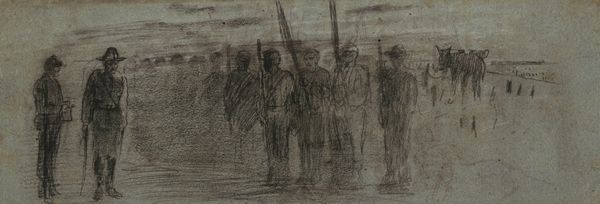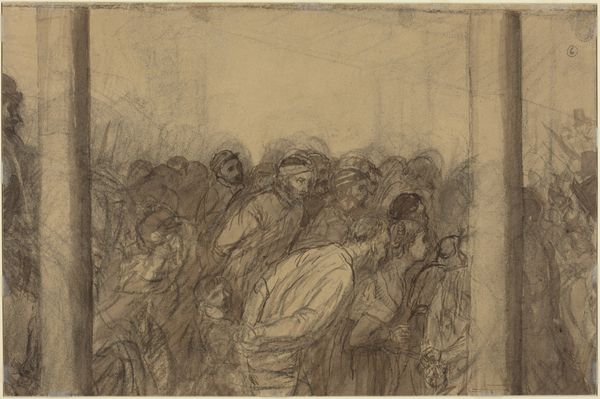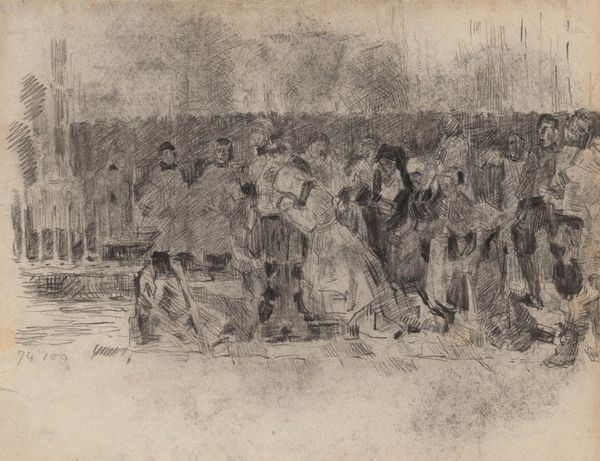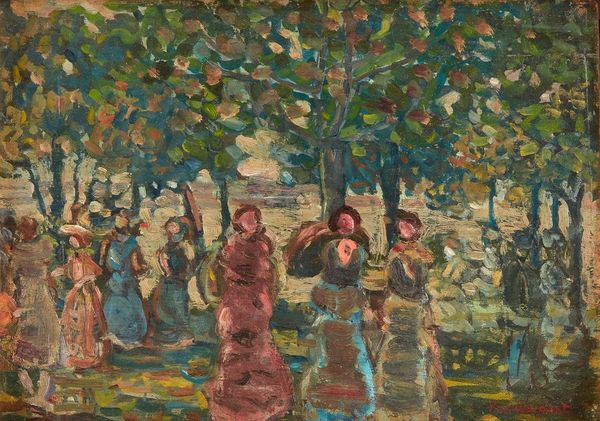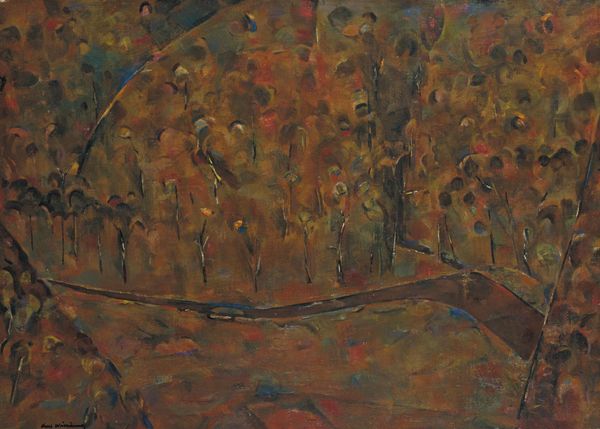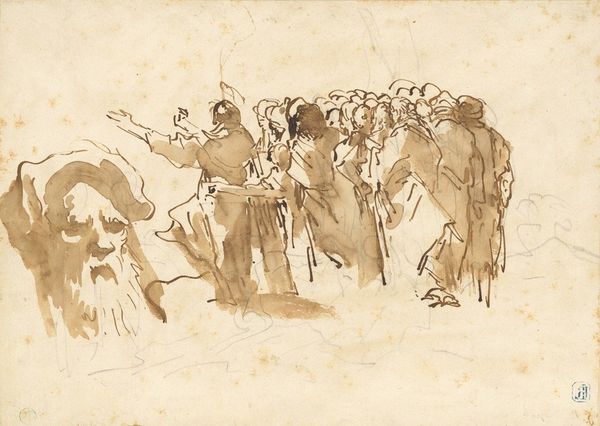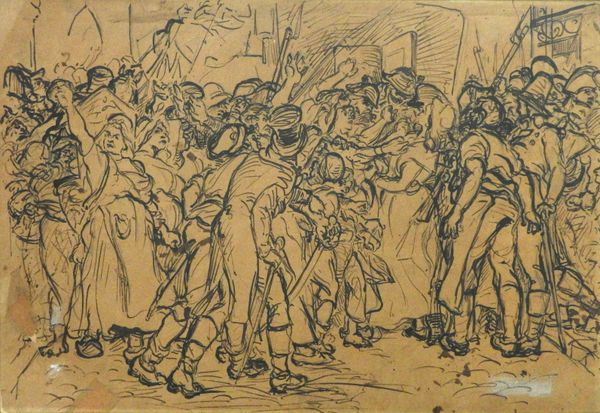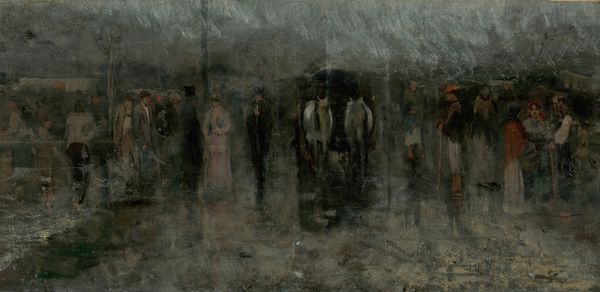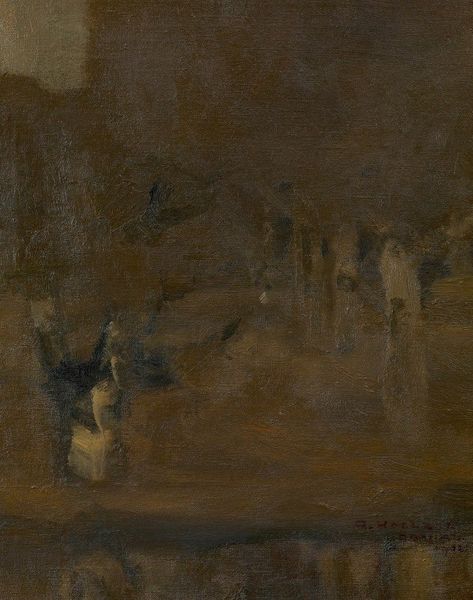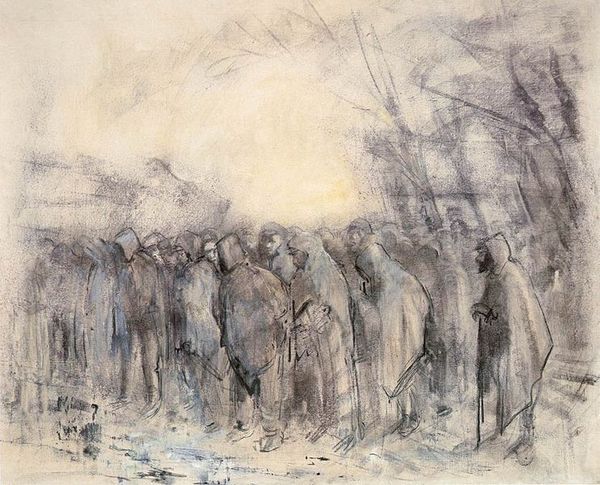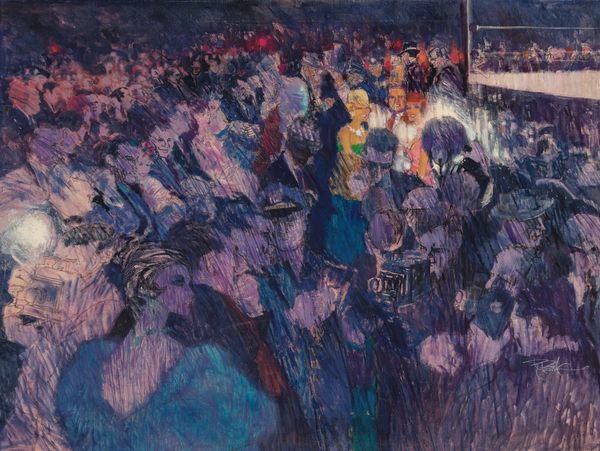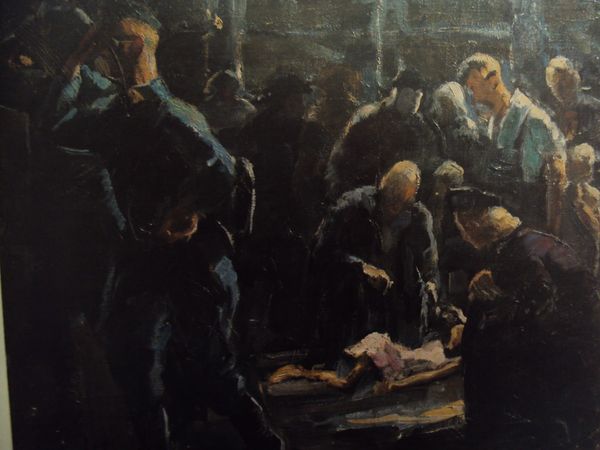
Copyright: Public Domain: Artvee
Curator: Here we have Ladislav Mednyánszky’s "Prisoners of War," created sometime between 1914 and 1918. What’s your first reaction to it? Editor: My immediate impression is a sense of quiet desolation, almost like watching ghosts fade into the background. The monochromatic palette really amplifies that feeling. Curator: It's interesting you mention ghosts because the entire composition seems built upon spectral presences. Notice how Mednyánszky used thin pencil strokes, building up form gradually in delicate, transparent layers. The prisoners become apparitions and merge almost imperceptibly with the background. It definitely invokes a feeling of impermanence. Editor: Yes, and it makes me think about how boundaries blur here. Are they solid figures, or are they becoming part of the landscape itself? And look at the lone guard; he’s the only figure defined with a high level of contrast and delineation. What might that contrast between the singular, individualized guard and the amorphous collective of prisoners signify? Curator: Well, beyond its formal qualities, "Prisoners of War" definitely resonates on a deeply personal level, especially given Mednyánszky's romantic sensibilities and leanings towards expressionism. The period when this work was executed, with all the tragedies of WWI, undoubtedly seeped into the core of the artist's creative exploration. He might not have consciously known this scene firsthand, but his vision seems to have captured a universal feeling. Editor: Precisely! It speaks to the depersonalization of war. I was wondering if we could talk a little about the line quality; I noted its semiotic quality as the linear strokes seem to operate both representationally and expressively. Curator: A very perceptive point! I can see your formalist take…but allow me to just quickly muse that Mednyánszky was one of those artists who just saw with a romantic's soul, using line not to define, but to suggest—a wisp of sadness turned into an image. Editor: A perfect note to conclude our exploration! Thank you for this fascinating peek into the soul behind "Prisoners of War," adding depth to the aesthetic form that Mednyánszky forged. Curator: And thank you for your meticulous attention to the structural integrity of the artwork; It shows me how both form and feeling are intertwined—neither exists without the other.
Comments
No comments
Be the first to comment and join the conversation on the ultimate creative platform.
